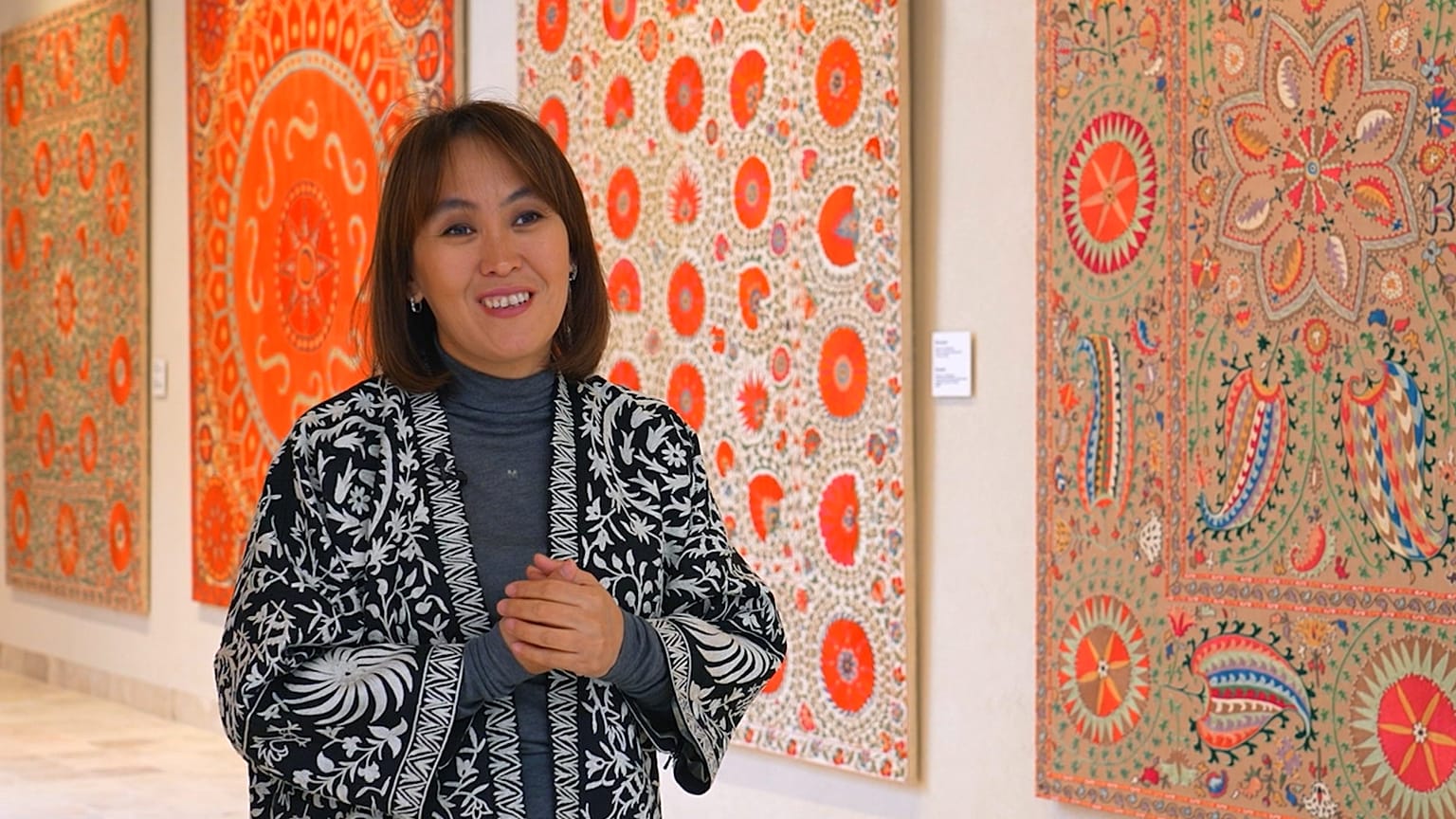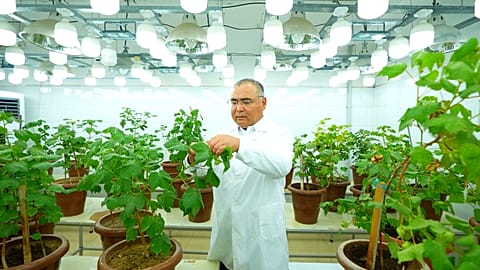Master embroiderer Madina Kasimbaeva is breathing new life into Uzbekistan’s Tashkent school of suzani. Her handmade textiles empower women and have earned worldwide recognition, from Qatar to the British Museum.
In a quiet corner of Tashkent’s Suzukota Craftsmen’s Town, the rhythmic sound of needles gliding through silk fills the air. Surrounded by fabrics shimmering in hues of pomegranate, indigo and gold, master craftswoman Madina Kasimbaeva works alongside a team of women whose fingers carry centuries of tradition. Each stitch is more than embroidery; it continues Uzbekistan’s cultural identity.
For more than twenty-five years, Kasimbaeva has dedicated her life to reviving and reinventing suzani — the intricate hand-embroidered textile that has defined Uzbek artistry for generations. Her journey from a small neighbourhood workshop to international exhibitions embodies the perseverance, creativity and pride of Uzbek women artisans who have turned craft into global art.
Early passion for embroidery
Born and raised in Tashkent, Madina discovered her passion for embroidery at an early age. As a child, she would sit beside her mother and grandmother, watching them sew floral patterns onto household textiles — a common sight in Uzbek homes. Those first impressions soon became a calling.
She honed her skills at the Lyceum of Decorative and Applied Arts and later at the Fashion Design Centre of the Academy of Arts of Uzbekistan where she deepened her understanding of composition, colour and textile history. It was during this time that Madina became fascinated by the once-prominent Tashkent “palyak” school of embroidery — a unique tradition characterised by cosmic imagery of the sun, moon and stars.
“At some point, Tashkent embroidery had nearly disappeared,” she recalls. “I wanted to bring it back — to show that this art still lives, and that it can speak to the world in a modern language.”
From workshop to atelier
In the early years, Madina’s team was composed of a few neighbours — women and girls from her mahalla who shared a love for needlework. They began with modest projects: pillow covers, tablecloths and simple garments. Over time, as demand grew, the workshop evolved into a professional collective producing suzani panels, handbags, interior décor and even embroidered furniture.
By 2006, she founded her own brand — Suzani by Kasimbaeva — a creative atelier that became both a production centre and a school. Today, the atelier employs over one hundred women and has trained nearly a thousand apprentices. Many have gone on to establish their own workshops across Uzbekistan, expanding the reach of traditional crafts and creating sustainable livelihoods for women.
“What makes suzani unique,” Madina explains, “is that everything is done by hand. The fabric itself is handwoven, made from natural fibres — half silk, half cotton. The designs are drawn directly onto the cloth, without computers or printers. Even our dyes come from plants and minerals, ensuring that the colours remain vivid for decades.”
Indeed, each suzani is a story stitched into fabric. A single large panel can take six months to complete, with prices reaching up to €5,000 — not just for the materials but for the artistry and heritage embodied in each piece.
International acclaim
Madina gained international attention in 2015 with her exhibition The Charm of a Distant Star, celebrating the revival of Tashkent embroidery. Since then, her creations have travelled from the United States to Europe, Australia and Qatar.
Her participation in the Santa Fe International Folk Art Festival was a turning point. “I had been trying for two years to get there,” she says. “When I finally did, it was because of my efforts to revive the Tashkent school. People were fascinated — they had never seen embroidery that reflected the universe.”
Today, Suzani by Kasimbaeva exports across Europe including the UK, Germany, France and Monaco. Two of her works are part of the British Museum’s permanent collection — a milestone few artisans achieve. For Madina, however, this success is not only personal. “When our national art is displayed in international museums,” she says with quiet pride, “it means Uzbekistan’s voice is being heard.”
A home for artisans
Behind Madina’s success lies a deep gratitude toward the government’s growing support for craftspeople. In 2019, she moved her atelier to the newly built Suzukota Craftsmen’s Town — a creative complex designed to unite artisans, workshops and galleries in one place.
“This was my dream,” she says. “Before that, I worked in a small rented room. There were times I could barely fit my materials inside. When we moved here and were given space free of charge, it was like a miracle.”
Visitors can tour her workshop, observe how fabrics are dyed, watch artisans draw patterns by hand and even take part in masterclasses. The space has become both a workplace and a cultural attraction — blending education, creativity and entrepreneurship in one setting.
Honours and legacy
In recognition of her contribution to Uzbekistan’s cultural heritage, Madina Kasimbaeva was awarded the Do’stlik (Friendship) Medal — one of the nation’s highest honours. The moment she learned about it, she says, was emotional.
“I cried,” she admits. “I am not a professor or an academic. I am just an embroiderer — an Uzbek woman. To be recognised by my country, by my President, means everything to me.”
But for Madina, awards are not the end goal. Her mission continues — to pass knowledge to the next generation, preserve the authenticity of Uzbek embroidery and promote women’s empowerment through craft.
“Every stitch carries a story,” she says. “When a young woman learns to embroider, she’s not just learning a skill — she’s connecting with her roots, her culture, her sense of pride.”



















